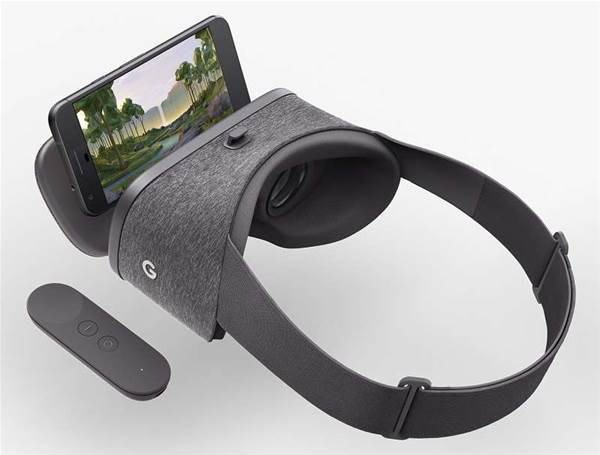Google Finally Discontinues the Daydream View VR Headset
Google’s Daydream View VR headset helped ignite users’ interest in virtual reality early on but Google has finally decided to completely abandon the virtual reality platform. With the discontinuation, the new Pixel 4 phone will no longer support the Daydream platform. Google will no longer be selling the Daydream View mobile headset from now henceforth. However, Google will continue supporting the app for the existing users with older phones.

The Google Daydream View headset had started as a competitor for the Sony PlayStation VR, Samsung Gear VR and even the high-profile and widely popular Oculus Rift headset. Google admitted that the mobile VR headset has never been popular with consumers and it could not justify its continuing to manufacture and support the headset.
The Daydream headset was originally billed as a virtual reality headset that users would combine with high-end smartphones such as Google’s Pixel series to create fairly cheap VR headset setups. In the setup, the phone screen would be very close to the user’s eyes and would, in combination with virtual reality headset, trick the wearer into believing they have been immersed into a computer-generated world similar to that they’d get with the high-end VR headsets such as HTC Vive and Oculus Go. The “immersive” experience would be powered by the phone’s processing chips.
The Daydream View headset enabled users who already own a high-end smartphone to immerse themselves into a fairly good VR experience with a cheap headset that costs under $100. Prices fell to as low as $59. But smartphone VR is somewhat constraining and simply has no viable future growth prospects.
The decision to discontinue Daydream headsets pretty much brings an abrupt end to the era of the smartphone-powered virtual reality headsets. It is difficult to see this setup reinventing itself in any other permutations. Moving forward, virtual reality experiences will be entirely on the dedicated virtual reality headsets or glasses that are either standalone, PC-based or those based on gaming consoles such as PSVR.
It was a cheap and simple entreport into VR experiences but the idea of transforming a smartphone into a virtual reality headset simply failed to catch on with mainstream users in spite of serious attempts by some of the major players to come with some novel solutions. Samsung offered users the smartphone-powered experience through its Gear VR headset which went as far as providing end users with an experience similar to the one that is powered by the Oculus software and app store. Google, too, tried to fiddle around with its Cardboard headset with its low-cost lenses and folded cardboard. But all of these efforts have come to nought. Consumers want what they want.
In spite of the discontinuation, there is still a pathway left for low-cost VR. Google has stated that the Daydream view headsets will continue supporting the older phones, that is, if you still have them. On the Google website, you can still find instructions on how to make a cardboard viewer. With the Daydream View headset gone, you can go for the Oculus Go headset, a low-power and affordable VR headset that retails at $199.
In the future, Google is planning to focus on the emerging AR technology. Google is already incorporating AR features into some its services such as the AR navigation tools in the Google Maps and the real-time translation feature in the Google Lens service among others.
https://virtualrealitytimes.com/2019/10/16/google-finally-discontinues-the-daydream-view-vr-headset/https://virtualrealitytimes.com/wp-content/uploads/2019/06/Google-Daydream-VR-600x337.jpghttps://virtualrealitytimes.com/wp-content/uploads/2019/06/Google-Daydream-VR-150x90.jpgDaydreamHardwareVR HeadsetsGoogle’s Daydream View VR headset helped ignite users’ interest in virtual reality early on but Google has finally decided to completely abandon the virtual reality platform. With the discontinuation, the new Pixel 4 phone will no longer support the Daydream platform. Google will no longer be selling the Daydream...Sam OchanjiSam Ochanji[email protected]EditorVirtual Reality Times - Metaverse & VR
